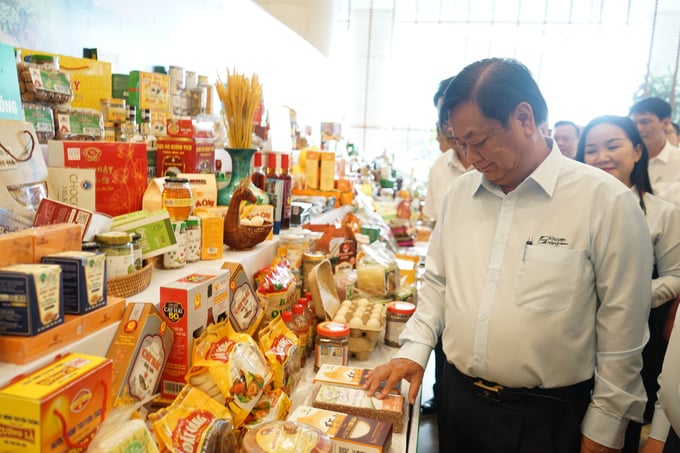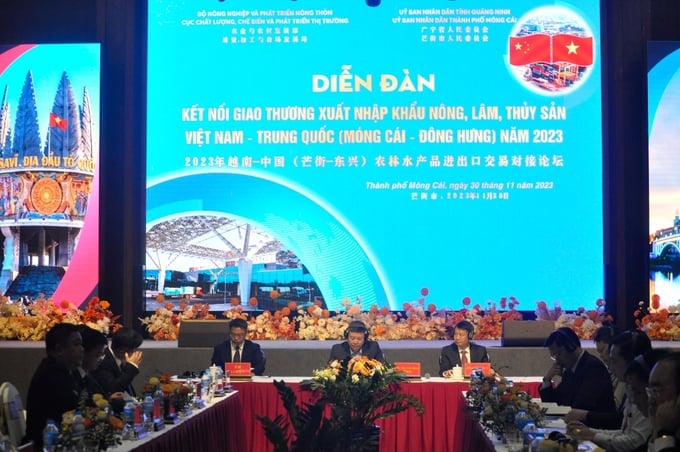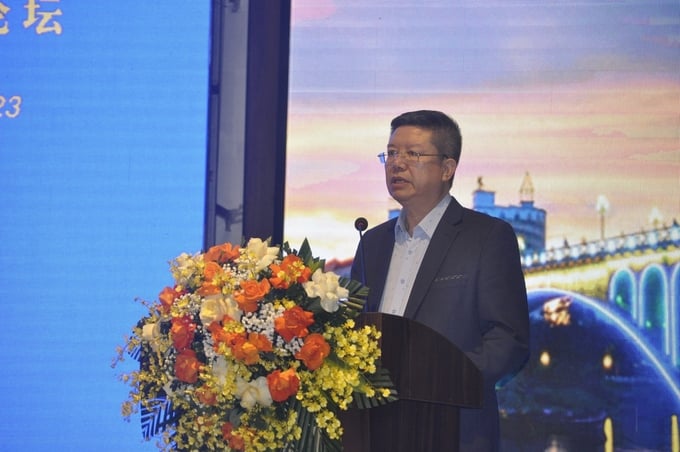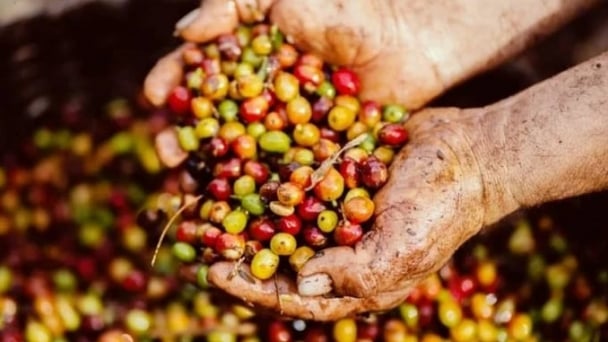June 17, 2025 | 14:22 GMT +7
June 17, 2025 | 14:22 GMT +7
Hotline: 0913.378.918
June 17, 2025 | 14:22 GMT +7
Hotline: 0913.378.918

Vietnam possesses an extensive range of high-quality agricultural, forestry, and fishery products. Photo: Nguyen Thanh.
Vietnam's export of agricultural product within the last few years have experienced remarkable growth. Notably, the total export turnover of Vietnamese agricultural, forestry, and fishery products reached over 53.2 billion USD in 2022, marking an increase of 9.3% compared to 2021.
China currently has a significant and increasing demand for the import of agricultural, forestry, and fishery products from Vietnam to serve its production and consumption needs. China's agricultural product imports reached 236 billion USD in 2022, with an average annual import growth rate of nearly 9.3%.
Moreover, China remains a major market for Vietnam's exports of agricultural, forestry, and fishery products. Namely, the bilateral trade turnover of these products between the two countries is estimated to reach 14.1 billion USD in the first 11 months of 2023. Key Vietnamese agricultural, forestry, and fishery exports to China include vegetables, rubber, seafood, wood and wooden products, rice, cassava and cassava products, cashews, coffee, tea, among others.
However, Vietnamese agricultural, forestry, and fishery products are unable to fully utlize the Chinese domestic market due to a lack of direct connections with major corporations, modern distribution channels, e-commerce networks, and major supermarkets in China to reach consumers more directly and reduce intermediary stages.
With the aim of capitalizing on Vietnam's advantages of production capacity and supply of agricultural, forestry, and fishery products, the Department of Quality Management, Processing, and Market Development, in collaboration with the Mong Cai City People's Committee and the Government of Dong Hung City in Guangxi Province, China, will organize the "Vietnam-China agricultural, forestry, and fishery product import-export connection Forum" in Mong Cai city.

"Vietnam-China agricultural, forestry, and fishery product import-export connection Forum" in Mong Cai City. Photo: Nguyen Thanh.
At the forum, policymakers, policy planners, businesses, traders, and industry associations from both countries will have the opportunity to exchange information, share experiences, establish business collaborations, identify challenges, and propose sustainable solutions. The goal is to promote the marketing and enhance the consumption of Vietnamese fishery products in the Chinese market and vice versa.
Mr. Hoang Gia Sinh, Grade 2 Customs Supervisor, Autonomous Ethnic Minority Region Trade Bureau of Guangxi, emphasized that agricultural products and by-products, fishery products, and fruits, are characteristic products bearing the advantages of both countries. As a result, bilateral trade plays a significant role in expanding mutual trade and improving economic cooperation. According to statistics, the transaction volume as of October 2023 has exceeded 750,000 tons.
To further facilitate agricultural, forestry, and fishery product imports and exports between the two countries, Guangxi city has expedited the construction of border and logistics infrastructure. The China-Vietnam train services are currently in regular operation. Additionally, the construction of the high-speed railway line to Dong Hung Station is progressing rapidly, with an estimated completion date of late 2023. These infrastructures provide a direct connection to the China-Vietnam border. The opening of the Khanh Chau Port fruit transportation route and the establishment of a "maritime highway" will also enable the export of Vietnamese fruits into the Chinese market.

Mr. Le Thanh Hoa, Deputy Director of the Department of Quality Management, Processing, and Market Development under the Ministry of Agriculture and Rural Development. Photo: Nguyen Thanh.
The key transshipment cities in Guangxi for importing fruits and fishery products from ASEAN markets, including Nanning, Songta, Baise, Qinzhou, and Fangcheng, have over 30 large-scale cold chain logistics centers capable of meeting the storage and transshipment needs of Vietnamese fruits and fishery products in Guangxi.
Mr. Hoang Gia Sinh suggested enhancing the speed of customs procedures at border gates, investing in the construction of border infrastructures, and collaborating on disease prevention for animals and plants across borders.
Additionally, it is crucial to provide timely updates on customs clearance issues regarding agricultural, forestry, and fishery products during peak seasons. Improvements to the mobilization of transport vehicles and the efficiency of border customs clearance are needed to facilitate the import and export of agricultural, forestry, and fishery products.
With the goal expanding the scale of agricultural, forestry, and fishery trade, both countries need to refine border opening policies, establish a broader cooperation platform, assist companies from both countries in expanding cooperation channels and enhancing accurate connections. Support for companies engaged in cross-border trade of agricultural, forestry, and fishery products and the expansion of export markets, in combination with raising the standards in the logistics system for agricultural, forestry, and fishery products, is essential.
Mr. Hoang Gia Sinh emphasized that the 2023 Vietnam-China agricultural, forestry, and fishery product import-export connection Forum (Mong Cai - Dong Hung) is an excellent opportunity for both parties to seize opportunities, meet new partners, expand product channels, secure new orders, and achieve the goal of "mutual victory, mutual benefit, and mutual development."

Vietnamese and Chinese businesses have formalized 21 economic agreements and contracts. Photo: Nguyen Thanh.
Mr. Le Thanh Hoa, Deputy Director of the Department of Quality Management, Processing, and Market Development under the Ministry of Agriculture and Rural Development, shared: "We hope that Vietnamese and Chinese businesses can connect directly to reduce intermediary stages, achieving a reasonable price range for consumers in both countries and fostering trade between businesses. This is the goal we have set."
During the forum, Vietnamese and Chinese businesses have signed 21 economic agreements and contracts aimed at promoting the import and export of agricultural, forestry, and fishery products, as well as trade, logistics, and high-tech agriculture. This serves as a foundation to contribute to the increase in the import and export turnover of goods through the Mong Cai (Vietnam) - Dong Hung (China) border gates in the near future.
Translated by Nguyen Hai Long
![Turning wind and rain into action: [5] Hue applies modern technology in disaster forecasting](https://t.ex-cdn.com/nongnghiepmoitruong.vn/608w/files/news/2025/06/17/z6704423696987_15fd32ffc26d590d204d520c9dac6786-nongnghiep-093938.jpg)
(VAN) In Hue city, modern technology has recently been applied in meteorological and hydrological forecasting and warning, helping to reduce the damage caused by natural disasters.

(VAN) A cutting-edge farming technique being implemented on an experimental ranch in Arizona's Sonoran Desert has already saved a billion gallons of water over five years, according to Civil Eats.

(VAN) Poultry and pig production and the environment can be boosted through enhanced water technology, according to new research.

(VAN) Coffee prices on June 16, 2025 are unchanged. In Vietnam, local trading prices are holding steady, ranging around VND 112,000 – VND 112,500/kg.
![Turning wind and rain into action: [4] Bringing climate bulletins to remote and isolated areas](https://t.ex-cdn.com/nongnghiepmoitruong.vn/608w/files/linhnhp/2025/06/14/1152-z6704423696987_15fd32ffc26d590d204d520c9dac6786-nongnghiep-151141.jpg)
(VAN) The Vietnam Agriculture and Nature Newspaper interviewed Mr. Vu Thai Truong, Acting Head of Climate Change and Environment at UNDP Vietnam, to gain deeper insight into how climate bulletins are delivered to farmers.

(VAN) In Tien Giang, a high-tech shrimp farm has developed a distinctive energy-saving farming model that has yielded promising results.
![Turning wind and rain into action: [3] 300.000 farmers benefit from agro-climatic bulletins](https://t.ex-cdn.com/nongnghiepmoitruong.vn/608w/files/news/2025/06/12/e5a48259d6a262fc3bb3-nongnghiep-125122.jpg)
(VAN) The agro-climatic bulletin has become a valuable tool for farmers in the Mekong Delta. After more than five years of implementation, the initiative is gradually being expanded nationwide.